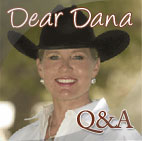Muscle memory and your horse’s entire body
37th in a series
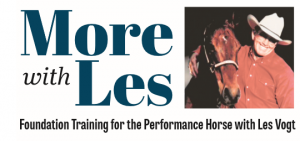 Last issue, Les really dialed us into yielding and bending to either side in a willing, balanced manner. As we head into Exercises 3 and 4 in Les’s program, here’s some items to focus on.
Last issue, Les really dialed us into yielding and bending to either side in a willing, balanced manner. As we head into Exercises 3 and 4 in Les’s program, here’s some items to focus on.
Objective:
• To start teaching your horse to let you move his whole body laterally
• To start teaching your horse to let you move his hip
• To learn to do both of these things without letting the shoulder lead the movement
• To improve your back-up or overcome resistance if you’re having problems
• To learn to feel whether your horse is straight from head to tail and learn how to correct him if he is not
• To learn how to back your horse easily and softly
Q&A – Hey Ray!: Let’s put a halt to confusion about the ‘half-halt’
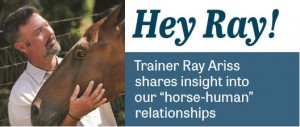 HEY RAY! I’ve ridden over 20 years under several trainers, and they all have used a term that I am embarrassed to admit that I don’t know—a “half-halt”. What is this, and how do we apply it? —Anonymous rider, San Diego, Calif
HEY RAY! I’ve ridden over 20 years under several trainers, and they all have used a term that I am embarrassed to admit that I don’t know—a “half-halt”. What is this, and how do we apply it? —Anonymous rider, San Diego, Calif
DEAR A.R.: Your situation is a lot more common than you think. You would be surprised how many riders have confided in me that exact same question over the years. This is a topic that I actually like to explain and talk about. Once you have the right visual, it’s a very helpful and effective tool in helping with balance and self carriage.
When we think of the word halt, the picture we usually see is immobility or “freeze.” The purpose of halting is to bring all movement to a complete stop. A half-halt is exactly the opposite of a halt, but it is not a half-hearted halt or kind of halt. The halfhalt has a very specific purpose—to possibly stop, if necessary as an adjustment, with the intention of continuing to move forward.
Trainer Spotlight – Dane Lawrence
With 15+ years as a dressage trainer and competitor, USDF Silver and Bronze Medalist Dane Lawrence has worked successfully with many breeds. One that he finds challenging but equally rewarding is the off-the-track Thoroughbred (OTTB).
Says Dane, “For dressage, an OTTB has to learn a new way of moving and relating to the rider. Because they are bred to run at top speed, rebalancing them to be light on the forehand and engaged behind takes time. They have to become attuned to different rein and leg aids and learn to move in a rounder, more elevated frame. But if you’re patient, the Thoroughbred can be a terrific partner.”


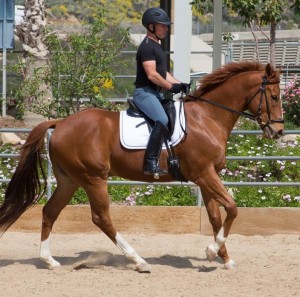
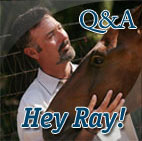
 Read Columns
Read Columns
